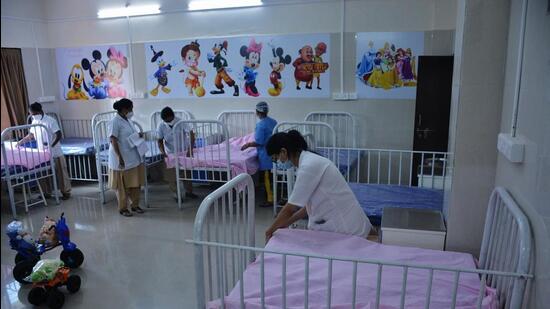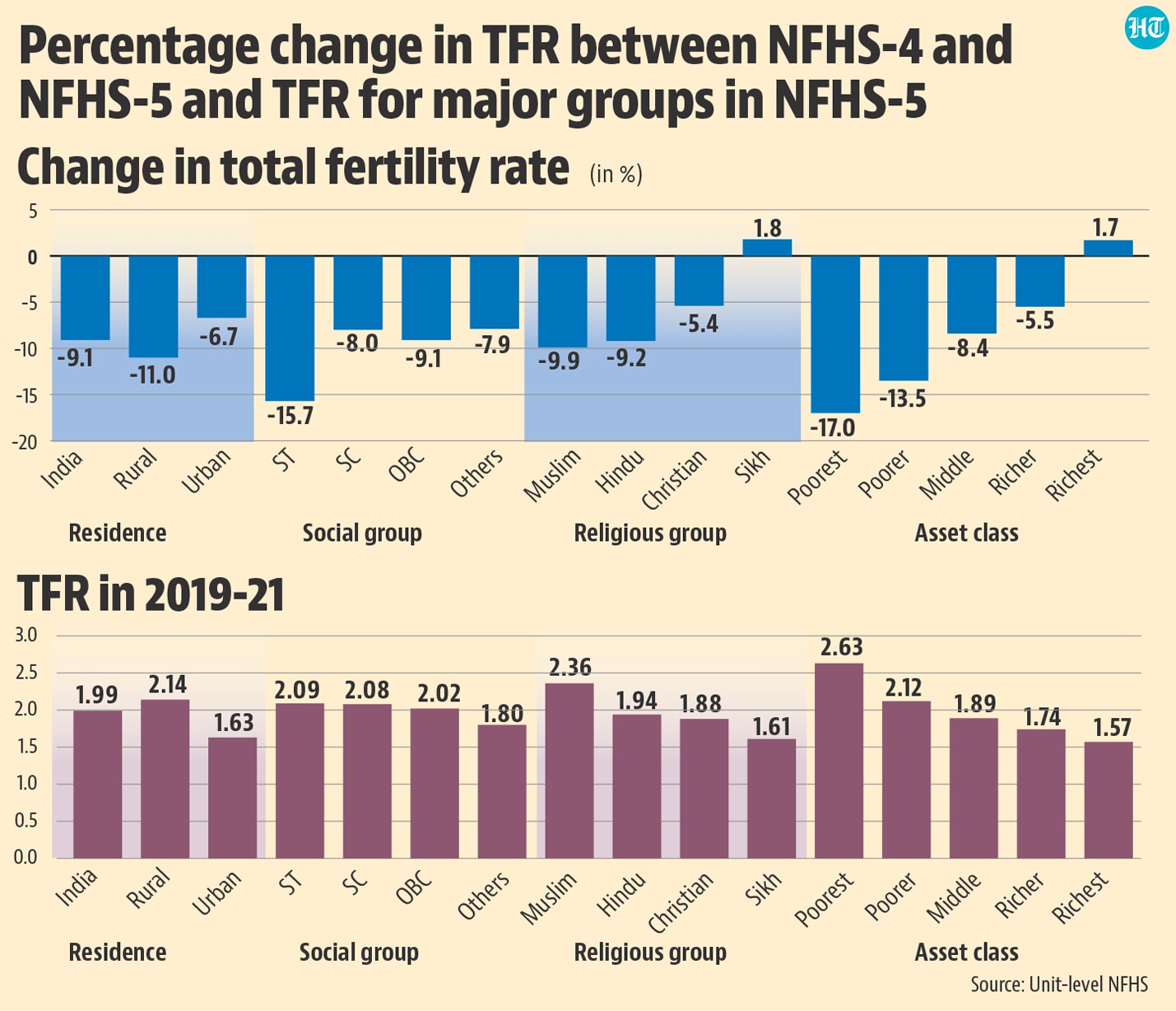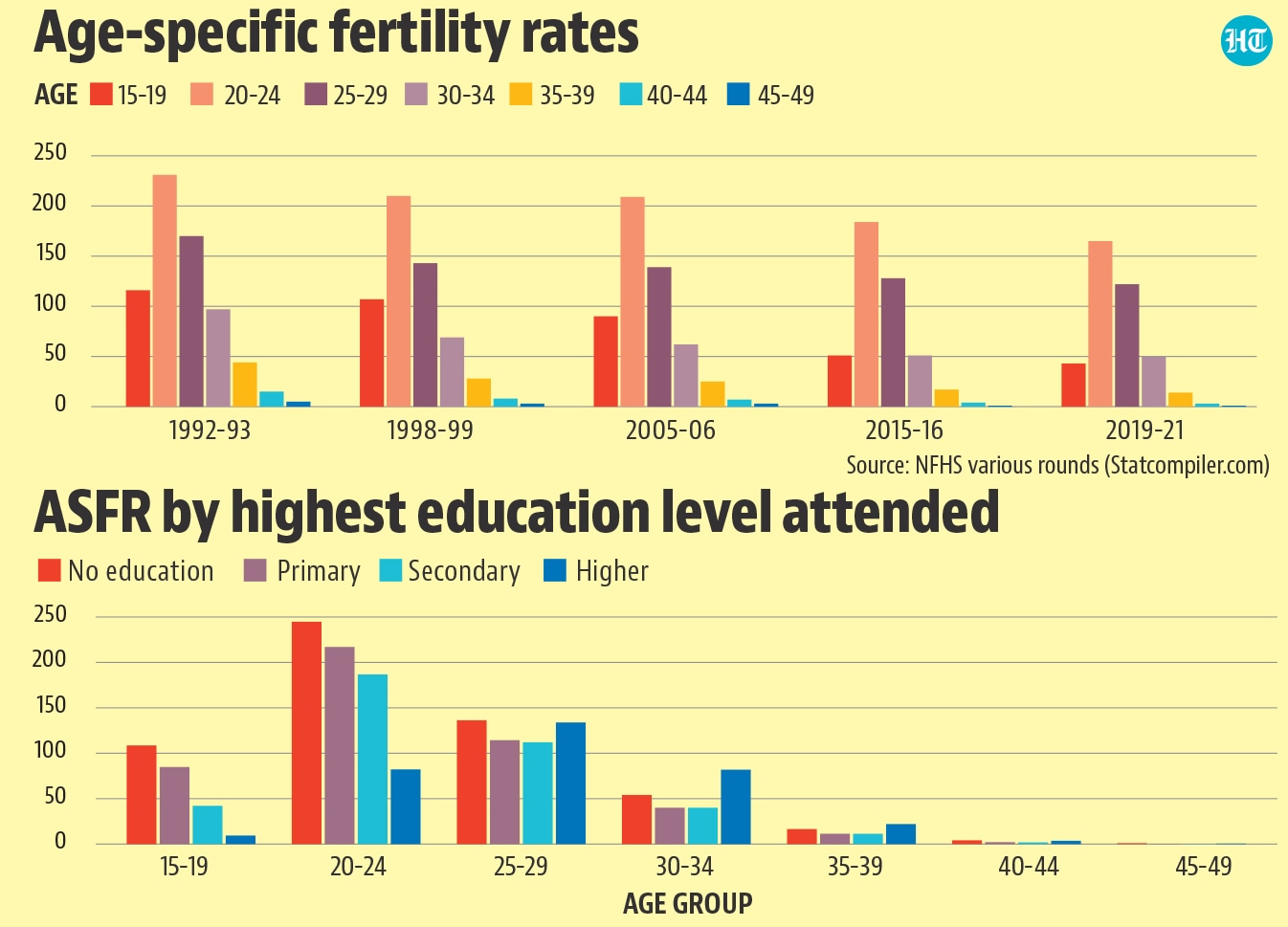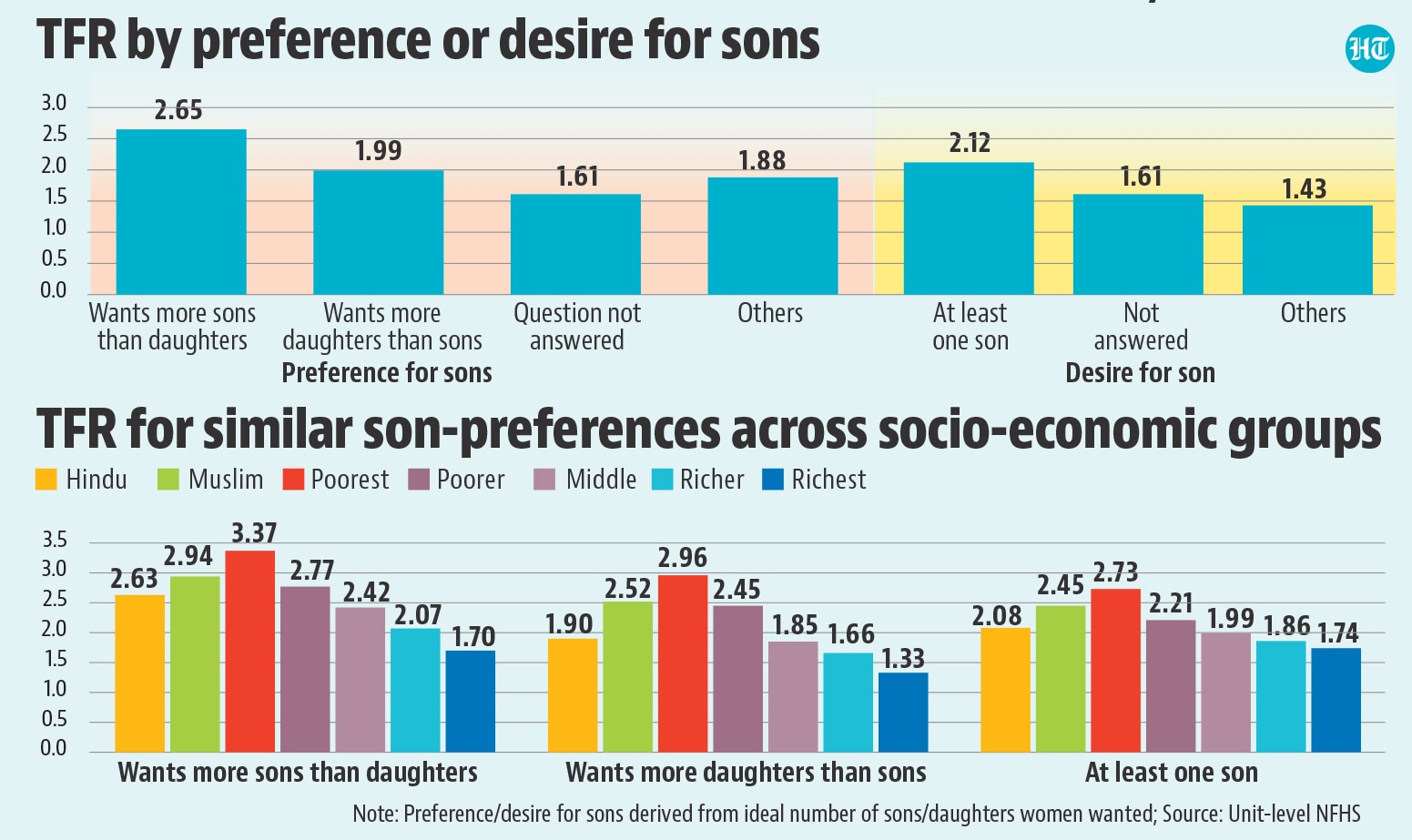Number Theory: Understanding the fall in India’s fertility rate
India’s TFR fell from 2.2 in NFHS-4 to 2 in NFHS-5 – means that a country’s population will not grow in the long-term.
India’s Total Fertility Rate (TFR) falling below replacement levels made the headlines when summary findings of the fifth round of National Family and Health Survey (NFHS) were released on November 24 last year. TFR is the average number of children a woman is expected to have during her child-bearing years. Simply speaking, it is the average number of children in a nuclear family.

TFR falling below the replacement level of 2.1 – India’s TFR fell from 2.2 in NFHS-4 to 2 in NFHS-5 – means that a country’s population will not grow in the long-term. What factors have led to this development? An HT analysis based on unit-level data from NFHS can help us answer this question.
TFR decline is the largest among high-fertility groups…
NFHS data allows us to track changes in TFR by religion, social group, place of residence, and asset class of respondents. A simple comparison of the NFHS-4 and NFHS-5 data shows that the decline is the sharpest for women belonging to groups which had the highest TFRs in the previous round. Women from the poorest asset quintile (bottom 20%) show the steepest decline in TFR in percentage terms, whereas those in the richest have actually seen a marginal increase. The trend follows the same pattern when it comes to social groups and religion (scheduled tribes and Muslims show the most decline). To be sure, just as in the case of different wealth quintiles, there was a wide variation in TFR between different social and religious groups in the latest round of the NFHS too.

These numbers should be read with the fact that declining TFR is not a new thing in India. India’s TFR was 3.4 in the 1992-93 round of NFHS. This fell to 2.8 in 1998-99, 2.7 in 2005-06, 2.2 in 2015-16, and 2 in 2019-21. This trend of declining fertility is also seen in Sample Registration Survey (SRS) reports, which also show similar levels of TFR as NFHS. In SRS, TFR was 2.8 in 2006, 2.3 in 2015, and 2.1 in 2019.
…but this is not necessarily true for states that had high TFR in 2015-16
While all social, religious, and economic groups that had higher TFR in 2015-16 have shown a bigger decline in percentage terms than those who had lower TFR, the same cannot be said of all states of India. Uttar Pradesh, Rajasthan, Madhya Pradesh, Chhattisgarh, and Assam, for example, have shown bigger proportional decline in TFR than Bihar although they had much lower TFR than Bihar in 2015-16 itself.

Changes in ASFR are as interesting as changes in TFR
TFR is essentially a derived concept which depends on what is called Age Specific Fertility Rate (ASFR). ASFR measures the number of childbirths per thousand women in a given age-group in the previous three years. TFR is just a summation of ASFR for the five different age-groups. A comparison of ASFR across various NFHS rounds shows a pattern of delayed motherhood in India.

What explains these changes in ASFR? Looking at the latest NFHS data can offer some answers. College education is the biggest factor in bringing down ASFR in the 20-24 age-group, which makes the largest contribution to TFR in India. College educated women are also more likely to give birth to children at a later age, as can be seen from their ASFRs being higher than those with lower educational levels between 25-39 years. This also means that increasing the legal age of marriage for women to 21 years may not have much impact on the nutritional status or education and job prospects of women. Childbearing, as it is, is concentrated in the 20-24 age group unless women are seeking higher education.

Son-preference drives TFR, but it is not the only factor
Latest NFHS data once again confirms the fact that son-preference is among the biggest reasons for high fertility levels in India. More than 80% of the women covered in the survey said that they wanted at least one son, while 15% wanted more sons than daughters. A comparison of TFR levels by son-preference shows a strong positive correlation.
However, it will be wrong to argue that son-preference is the only factor driving high TFR levels in India. This is best seen in difference between TFR levels among various socio-economic groups with similar son preferences.
(This is the third of a five-part data journalism series based on NFHS data. The second part looked at food habits of Indians and the fourth part will look at what the NFHS tells us about employment in India.
All Access.
One Subscription.
Get 360° coverage—from daily headlines
to 100 year archives.



HT App & Website







